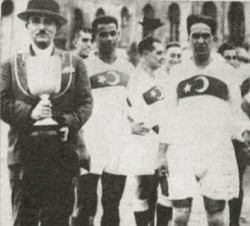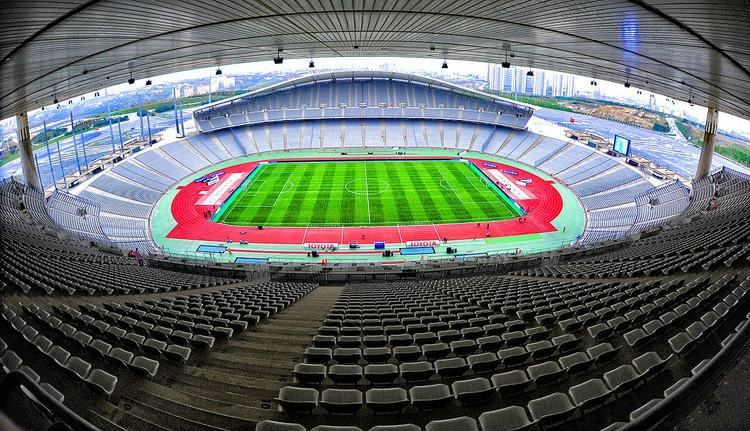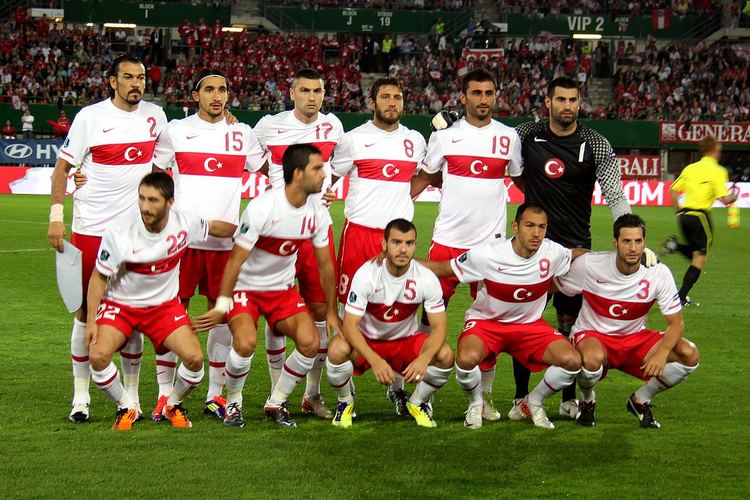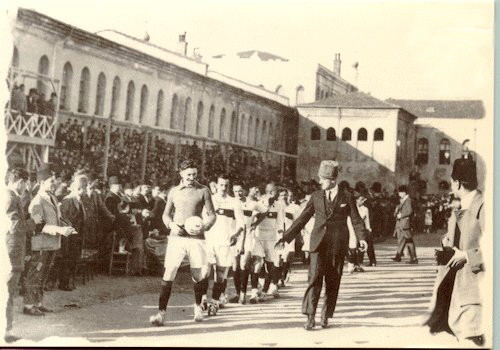
The first line of the Turkish national anthem declares, “Fear not; For the crimson banner that proudly ripples in this glorious dawn, shall not fade”. In a footballing sense life has been a bit of a mixed bag for the Turkish, with the country yet to have a truly ‘glorious dawn’ but the Turks not having faded from the footballing landscape completely.
They are not one of the better known football nations, such as England, Germany or Spain, but they have given it a fair go in the numerous competitions that they’ve entered over the years.
Turkey have qualified for the FIFA World Cup on three separate occasions; namely in 1950, 1954 and in 2002. They had to withdraw from the 1950 tournament due to financial problems and they only made it into the 1954 tournament after a coin toss declared they had beaten Spain. The team that headed to the 2002 World Cup in South Korea and Japan was a different beast to the one that meekly surrendered their place nearly fifty years before, though, making it to the semi-final of the competition before losing to eventual winners Brazil. They did beat South Korea, one of the host nations, in the third-fourth place match, however.
Introduction to Turkish Football
![]() Turkey have punched above their weight just as much in the UEFA European Championships. Though they did not qualify for the competition for the first time until 1996, they wasted little time in making up for that. They were knocked out in the group stages when the tournament was hosted by England but went one better four years later and made the quarter-finals in 2000. In 2004 they failed to qualify but they reached the semi-finals of the 2008 iteration of the tournament, losing to runners-up Germany. Fair to say, then, that Turkey seem either to fail to qualify for major tournaments or else qualify and then do much better than expected.
Turkey have punched above their weight just as much in the UEFA European Championships. Though they did not qualify for the competition for the first time until 1996, they wasted little time in making up for that. They were knocked out in the group stages when the tournament was hosted by England but went one better four years later and made the quarter-finals in 2000. In 2004 they failed to qualify but they reached the semi-finals of the 2008 iteration of the tournament, losing to runners-up Germany. Fair to say, then, that Turkey seem either to fail to qualify for major tournaments or else qualify and then do much better than expected.
Turkish domestic teams have struggled to find the same sort of performance level in European competitions. No team from Turkey has ever reached the final of the Champions League, even back when it was known as the European Cup. One has made the final of the UEFA Cup before it became the Europa League, however, with Galatasaray beating Arsenal to lift the trophy in 2000.
We want to tell you much more than just the various stages of competitions that Turkey and Turkish teams have reached. That’s why in this section you’ll find information on the sort of stadiums you could expect to see if you went to Turkey. You’ll also find out about the Turkish league system, we’ll tell you a bit more about the national side and we’ll also fill you in on how football made its way to the land of baclava, mosques, and Turkish Delight in the first place.
Turkish Stadiums

Stadiums in Turkey are genuinely fascinating. There is an odd mix of the truly spectacular, such as the 76,000 plus Atatürk Stadium, through to less impressive 10,000 seats in the Atatürk Stadium. In fact, there are at least ten different stadiums in Turkey with the word Atatürk in as a tip of the cap to Mustafa Kemal Atatürk, the country’s first President and the man credited with founding the Republic of Turkey.
There are over fifteen stadiums in the country that boast capacities of more than 15,000 with plenty more under construction at the time of writing. As you would expect from a country with a climate such as Turkey’s the majority of stadiums are built in such a way that they take advantage of the amazing Turkish weather. Plenty of them follow the ‘English Style’ of having a grandstand on each side of the pitch, though some follow the more ‘European Style’ of having a bowl of continuous seating.
Turkish Leagues
 The Turkish football league system is not quite as overwhelmingly sprawling as some other countries, though it’s still an impressively complex beast.
The Turkish football league system is not quite as overwhelmingly sprawling as some other countries, though it’s still an impressively complex beast.
The top-flight, known as the Süper Lig, features eighteen teams with another eighteen competing in the second-tier, the TFF 1. Lig.
The TFF 2. Lig, which is the third level on the Turkish footballing pyramid, is split into two groups of eighteen clubs named White Group and Red Group. The final level is the fourth-tier, which has three groups with nineteen clubs in each.
Below the TFF 3. Lig is a series of amateur leagues, broken down into regional sections. The entire Turkish football league system is meritocratic, meaning that even the lowliest amateur side could one day gain promotion all the way up to the Süper Lig.
A method of promotion and relegation is in place between all of the leagues in Turkey.
Turkey National Team

Despite football being played in Turkey since the middle of the 19th century, the Turkish football team didn’t actually play its first match until 1923. They drew 2-2 with Romania and Zoeki Riza Sporel wrote himself into Turkish folklore by scoring both of the goals. The match wasn’t an official one, with FIFA recognising Turkey’s first game proper as their match with Czechoslovakia in the 1924 Summer Olympics. A touch harsh, seeing as Turkey lost that 5-2.
We’ve already told you about Turkey’s record in FIFA World Cups and UEFA European Championships, but we should also point out that the Turkish have suffered a number of near misses when it comes to tournament qualification over the years. The most notable of these was the 1950 World Cup when Turkey qualified thanks to a 7-0 victory over Syria, only for the country’s financial problems to stop them competing in the tournament itself.
Key Stats
| Turkey National Team Statistics | |
|---|---|
| Year Formed | 1923 |
| Home Stadium | Atatürk Olympic Stadium |
| Stadium Capacity | 76,092 |
| Major Honours | None |
| Current Manager | Şenol Güneş |
| Top Scorer | Hakan Şükür (51) |
| Most Caps | Rüştü Reçber (120) |
| Best Performance at World Cup | Semi-Final (2002) |
| Best Performance at European Championships | Semi-Final (2008) |
| Kit Colours | Red and Black (Home), Light Blue and Red (Away) |
History Of Football In Turkey

As is the case with pretty much every country, football was first introduced to Turkey by English men living in the area who returned to the Ottoman Empire with the game after spending some time back in Blighty. The first match took place in 1875 in Selanik, the area now better known as Thessaloniki in modern day Greece. The country’s first football club was called FC Smyrna and football, to begin with at least, was only really played in the Izmir district of the country.
In 1895 the same Englishmen that had introduced the game to Izmir also took it to Istanbul and set the game up in the area then known as Constantinople. The first mini-league, if you like, involved matches between clubs from Izmir and Turkey and took place in from 1897 until 1899 as well as in 1904. Interestingly it was mostly English people playing the game at the time and the first Turkish man to kick a ball is widely accepted to be Fuat Hüsnü Kayacan, who was a solider posted in the Izmir region in 1898. This is because initially teams in the Ottoman Empire were made up of Greeks, Armenians and the English. The first all Turkish club was the Black Stockings, formed in 1899. Sadly things didn’t get off to a good start, with Turkish police running onto the pitch and arresting as many players as they could.
